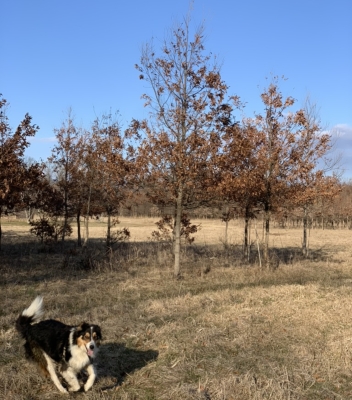BENEFITS OF IMMATURITY
Old Skirts
Looking at trees that usually drop their leaves in winter, you might notice that some of them — especially beeches and oaks — wear skirts of foliage all winter long. I say “skirts” because if the trees were human, the leaves would all be at skirt-level. Rather than being lush and green, these skirts are dried and brown or gray, just like their counterparts on the ground.
These trees, still clinging to their leaves, aren’t out of synch with the environment. Nor does this habit reflect the effect of climate change or nighttime lighting. The oak and beech branches cling to their leaves because the branches are “juvenile,” and reluctance to drop leaves is one sign of juvenility in plants.

Juvenile oak trees
(Artificial lighting and a warming climate have been shown, though, to delay leaf drop in autumn and advance the time when leaves unfold in spring, just how much depending on the tree species and the duration and the color of the light.)
Changes with Maturity
Juvenility in plants is akin to prepuberty in humans: during this period plants grow but are incapable of sexual reproduction, that is, flowering, then setting seed. Read more


